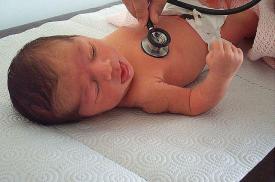The indisputable focus in Washington, D.C., and across the country last week was on the Supreme Court of the United States’ much anticipated hearings on whether the Affordable Care Act – or more specifically, mechanism foundational element, the individual mandate – is constitutional. On the third and final day of oral arguments, the justices weighed whether invalidating the individual mandate would necessitate repeal of the entire law and whether the Medicaid expansion to cover many uninsured is constitutional.
The indisputable focus in Washington, D.C., and across the country last week was on the Supreme Court of the United States’ much anticipated hearings on whether the Affordable Care Act – or more specifically, mechanism foundational element, the individual mandate – is constitutional. On the third and final day of oral arguments, the justices weighed whether invalidating the individual mandate would necessitate repeal of the entire law and whether the Medicaid expansion to cover many uninsured is constitutional. Like most Americans, the Partnership to Fight Chronic Disease will be anxiously awaiting the court’s decision in late June to determine the impact on the delivery of health care in this country and specifically to assess the developments and the implications for chronic disease prevention and management. In separate news, a couple of highlights on the impact of obesity can be found below.
- A study released Wednesday, and reported in The Wall Street Journal, showed that rates of obesity-linked cancers of the kidney, pancreas, lower esophagus and uterus increased annually from 1998 through 2008 (latest data available). The data in the Annual Report to the Nation on the Status of Cancer only adds to a growing host of evidence showing that obesity raises the risk of these and some other cancers, risks which are completely avoidable. According to the International Agency for Research on Cancer, “as many as one-third of common cancers in industrialized nations are linked to excess weight and lack of physical activity” and CDC stats show that, while obesity rates leveled off in the U.S. a decade ago, “an estimated 68.8% of adults remain overweight or obese and cancers can take years to develop.”
- Continuing the coverage on obesity, an opinion pieceby New York Times and Time Magazine Columnist Mark Bittman revisited the controversial topic of whether food advertising targeted toward children contributes to the rising childhood obesity epidemic in this country. Statistics from the CDC indicate that 17 percent of children in the United States are obese. Bittman opines, the cravings for certain unhealthy foods “…become habits as they are taught, encouraged and reinforced by the marketing arm of Big Food, and the federal government appears powerless to change this,” in reference to the First Amendment rights of advertisers. On an encouraging front, the new school lunch guidelines mark a significant step forward in the battle against childhood obesity by emphasizing whole grains and other healthy choices.
PFCD partner the Campaign to End Obesity issued a recent study demonstrating how the obesity epidemic in the U.S. fuels obesity-related chronic diseases and health care spending increases. The continued media and research focus on the prevalence and impact of obesity – in both adults and children – is a critical tool in educating policymakers and the general public about the importance of preventing and better managing costly and debilitating chronic diseases.
To end the week on a high note, we’d like to offer congratulations to our PFCD partner the National Association of Chronic Disease Directors (NACDD)for their recognition last month by the Atlanta Business Chronicle as a top-ten finalist for Atlanta’s Healthiest Employers. Placing ninth in the small organization category, the organization was recognized at a city-wide gathering of over 500 business leaders, including the director of the CDC, Dr. Thomas Frieden. Great job, NACDD – we love to celebrate the accomplishments of members of our coalition, especially those “walking the walk” in the workplace!








